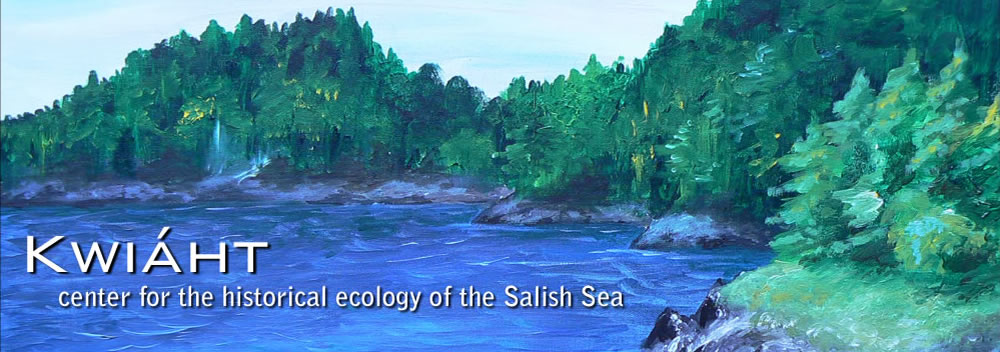Green Corridors and Urban Drainage
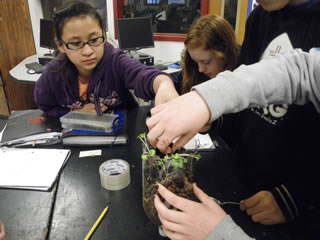
Students assembling bioswale models
Experimental validation of habitat enhancements and bioremediation facilities is often neglected in the rush to save damaged ecosystems and disappearing species. Nowhere is this problem more apparent than in the widespread government promotion and funding of bioswales and "rain gardens" to intercept and "treat" contaminated storm water runoff in densely populated areas. Far more is known about the civil engineering of drainage works (that is, the containers and pipes) than the choice of effective biological agents (bacteria, plants and fungi) for particular field conditions and contaminants. As a result, most of the installations that Kwiáht has been able to evaluate in the islands function little better than bare soil at sequestering contaminants. Some installations contain contaminated materials that can actually boost the toxic loading of throughput water, at least initially.
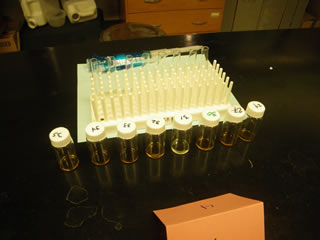
Testing plant extracts for copper accumulation
In 2012, Kwiáht began engaging island middle and high school classrooms in systematic testing of locally available fungal strains and vascular plants for biofiltration activity, in controlled experiments and field installations, with careful attention to the fate of toxics after their removal from throughput water—that is, whether toxic compounds are actually degraded (which we find is rare) or simply sequestered in roots, woody stems, leaves, or fruits and seeds. Depending on the locus of sequestration, toxics can return to ecosystems quickly and destructively: for example, toxics sequestered in fruits and seeds can be eaten by birds and redistributed. Metals toxic to fish, such as copper, are a particular concern as they cannot be degraded, but at best trapped in woody stems until plants can be harvested and—ideally—incinerated to reclaim the metals.
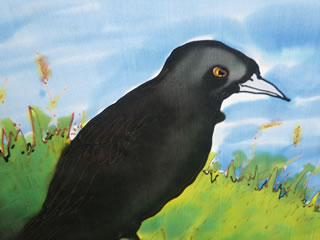
Inset from Silk Streams by Linda Vorobik for Kwiaht
As part of this project, Kwiáht researchers refined a reliable but inexpensive turbidimetric method for determining petroleum products (such as motor oil) in water, sediments, and extractions from plant and fungal biomass with relatively non-toxic solvents and a simple visual-range spectrophotometer. Students used this method to confirm that local strains of the oyster mushroom Pleurotus ostreatus sequester motor oils. Kwiáht also devised small polypropylene fabric "pom-poms" that scrub floating oil from water over periods of days to weeks, and can be deployed in storm drains or under docks to obtain reliable measures of floating oil over time. Installed at the inflow and outflow of bioswales, our pom-poms enable us to make quick estimates of bulk remedial efficiency. Adsorbed oils also contain any lipophilic contaminants such as pesticides that were in the sampled waters, and these can be determined to part-per-billion levels by ELISA immunoassays in our laboratory.
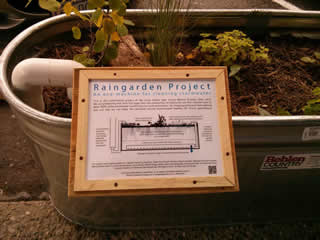
Eastsound eco-machine built by students
Kwiáht researchers and students have also designed and built modular "biomachines" for placement under downspouts (the first were installed at businesses in Eastsound in 2013, supported by the Captain Planet Foundation); and designed Green Corridors, a network of street-side gardens, parks, and micro-wetlands linked by trails to address storm water issues in Lopez Village. To mobilize public support for Green Corridors, Kwiáht commissioned five public artworks in 2013 that focus attention on lost wetlands, water quality, and aquatic wildlife.
Research Papers:
See also: Fisherman Bay Marine Health Observatory
